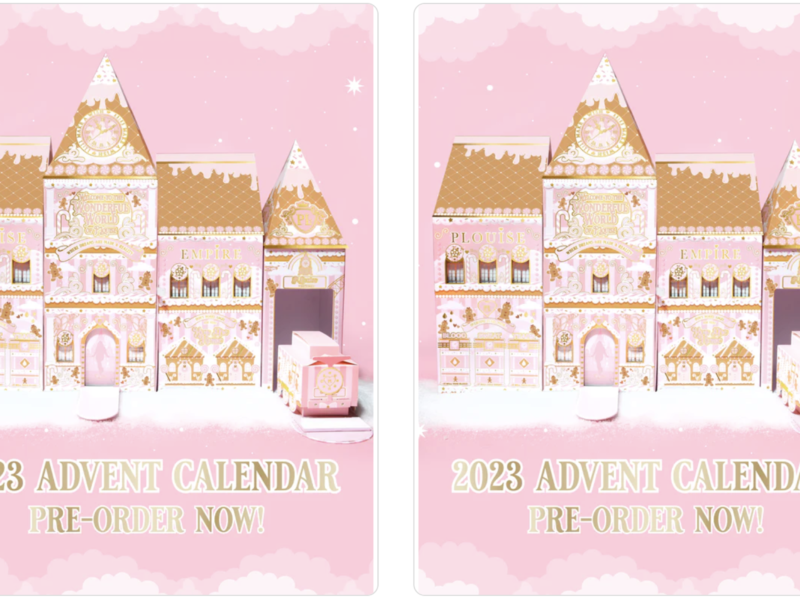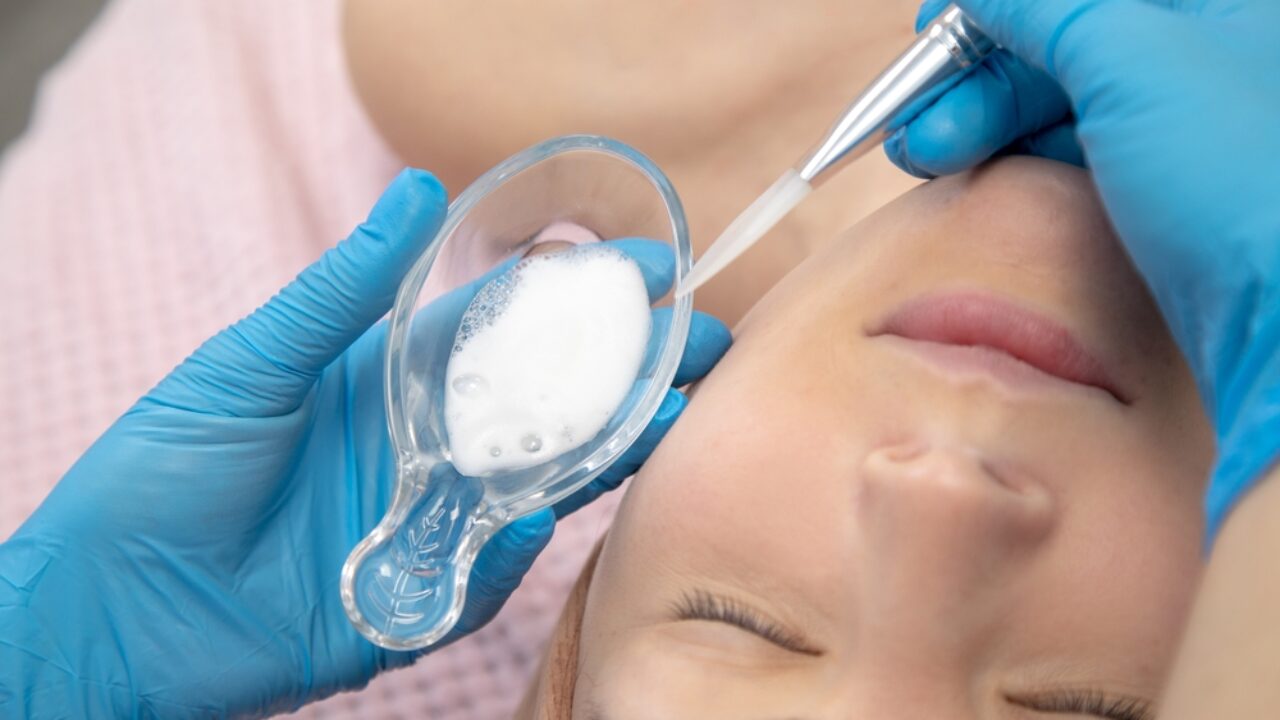
Benzoyl peroxide was one of the most searched-for skincare ingredients of 2022 and it’s proving just as popular this year. Here we explain what it does to the skin, how to use and what to avoid in our latest skincare Ingredient Spotlight
If you suffer from acne you’ve likely heard of benzoyl peroxide because it’s regarded as one of the most effective acne-fighting ingredients, certainly without a prescription.
It’s particularly great for inflammatory and cystic acne, which means you have red bumps that contain pus, instead of standard whiteheads and blackheads.
Read on to find out more about benzoyl peroxide (BP) – from what it does to how it works, how to use it, and what to look for when buying a benzoyl peroxide face wash, gel and more. This guide is the latest in our Ingredient Spotlight series where we attempt to demystify the art of understanding what the many, many ingredients in skincare and makeup do.
Benzoyl peroxide is a medication that has been used for more than 85 years to help treat acne and prevent further breakouts. It’s stronger than high-street acne skincare and as a result is only available over-the-counter or by prescription. It’s most commonly used to treat mild to moderate acne.
Benzoyl peroxide products then come in different forms:
Benzoyl peroxide products contain different concentrations and need to be used in different ways. How well you tolerate benzoyl peroxide will depend on your skin type or the type of acne you have.
If you have inflammatory acne on your face you may want to choose a lower concentration of around 4%, whereas if you have acne on your chest or back where your skin is more resilient you could likely tolerate a higher concentration. There are some products that are only available on prescription because they have higher levels of benzoyl peroxide.
BP can also be used to treat acne rosacea because it helps reduce your redness and calm your inflamed skin. In a study looking at the topical treatment of acne rosacea with benzoyl peroxide acetone gel, researchers found that it helped treat the symptoms of rosacea better than a placebo.
It’s always advisable that you speak to a doctor, and perform a patch test no matter what concentration of benzoyl peroxide you opt for.
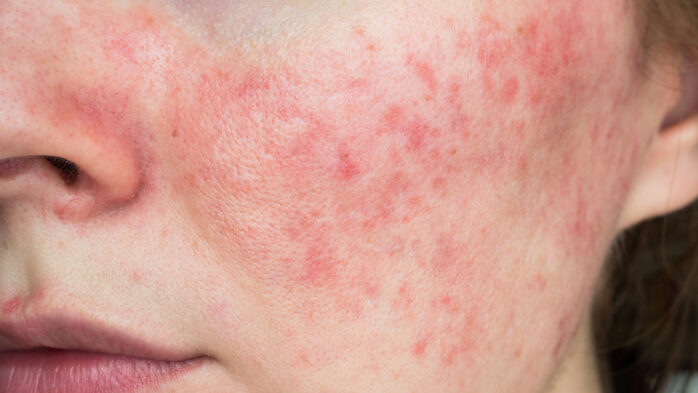 Shutterstock
Shutterstock Benzoyl peroxide is so great for acne because it has antiseptic properties, which help to reduce the amount of acne-causing bacteria. It’s also anti-inflammatory (reduces inflammation), and keratolytic (meaning it breaks down the top layer of dead skin cells) and can help reduce the appearance of acne scars.
In particular, it works by reducing the amount of bacteria and oil on the skin, and by removing dead skin cells. By being oil soluble, benzoyl peroxide can effectively enter sebum-filled pores to kill bacteria and dissolve dead skin cells. And by actually clearing your pores and killing the bacteria, it not only treats acne but prevents further breakouts.
If you have acne you might be wondering whether you should use salicylic acid or benzoyl peroxide. This is because they’re both acne powerhouses.
If you have blackheads or whiteheads we’d recommend using salicylic acid, which on its own should work to clear out your pores.
However, if your acne tends to be inflammatory, such as papules (solid, inflamed lumps) and pustules (white or yellow pus-filled tips), then you should use benzoyl peroxide to stop your outbreaks at the source.
FURTHER READING: The truth about the acids lurking in your skincare
When you first start using BP, your skin could possibly become irritated and your acne may seem to get worse before it gets better. It can take up to four weeks for you to start noticing results with a 5% benzoyl peroxide gel or wash and between 2-4 months to have a full effect.
Initially, you may experience dryness, redness, itching, flaking, tightness, or mild peeling. These side effects are usually temporary and should subside as your skin starts to adapt. You may have to put up with some peeling before it eventually goes away though.
As a result, we advise introducing any benzoyl peroxide skincare gradually to help mitigate these effects, in the same way you would with retinol.
Once your skin has adjusted to the treatment, BP is safe to use every day. You can use a benzoyl peroxide gel or face wash once or twice a day depending on your needs however, if you have sensitive skin we suggest only using it once a day before going to bed.
If your skin doesn’t improve after at least six weeks, or the irritation continues stop using it and give salicylic acid a go, as it’s less likely to cause irritation.
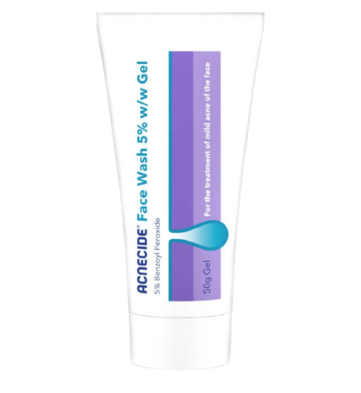 Acnecide
Acnecide Choosing a benzoyl peroxide gel will ultimately come down to the concentration you want/need but by their nature, benzoyl peroxide gels are the strongest and most targeted treatments so should be used sparingly.
Reserve them from particularly angry and troublesome breakouts and tap them over the area – after cleansing and moisturising – using a clean finger. Due to their high strength, and the fact the benzoyl peroxide makes your skin more sensitive to the sun, we advise only using a benzoyl peroxide gel at night.
Avoid your eye area.
mamabella recommends: Neutrogena Stubborn Acne Treatment (£13.84)
If using a benzoyl peroxide cream we recommend applying a moisturiser before you apply the benzoyl peroxide cream.
This will help create a buffer and compensate for the drying effects of the benzoyl peroxide. It will limit how well it works, which means the results may take longer, but is the more gentle way to get started.
However, if you feel that the benzoyl peroxide isn’t having enough of an effect you can switch to applying the benzoyl peroxide first. You’ll need to wait for the benzoyl peroxide to be absorbed completely before applying your moisturiser. Avoid your eye area.
If you’re using a benzoyl peroxide face wash or cleanser, then wash your face for at least a minute and then apply your moisturiser straight away afterwards, while your skin is still damp.
When it comes to choosing which is the best moisturiser for use with benzoyl peroxide, look for products with hydrating ingredients such as hyaluronic acid, squalane and shea butter. Choosing products that help boost your skin’s hydration will help counteract the drying effect of BP.
Avoid your eye area.
mamabella recommends: Acnecide Face Wash (£9.99)
You can use a benzoyl peroxide body wash like any normal body wash – in the shower or bath – however, it should not be used on or around your genitals.
mamabella recommends: PanOxyl Foaming Face and Body Wash (£13.81)
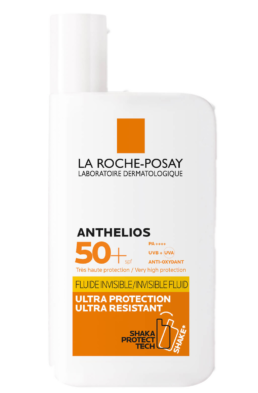 Boots
Boots Do not mix benzoyl peroxide with retinol because the two can deactivate each other when used together. You’ll be wasting your money on two products that don’t work.
Other products to avoid when using benzoyl peroxide include any products with a large amount of alcohol in the ingredients or any products that dry your skin or are abrasive.
This can include some soaps and cleansers as well as physical and chemical exfoliators.
You’ll also want to avoid strong sunlight when using BP because it makes your skin more sensitive.
To protect your skin while you’re undergoing treatment, we recommend using an oil-free sunscreen with SPF30 or above.
Be aware that benzoyl peroxide has the ability to bleach clothing or towels and possibly your hair too, so be careful when applying it.
If applying it to your face we’d recommend using a headband and if you need to dry your skin, use a white towel.
FURTHER READING: Skincare ingredient checker: Get to grips with what’s in your skincare with our ingredients guide

Kat is a freelance journalist, photographer, and the founder of Simply Gender Free – a company dedicated to smashing gender stereotypes in kids’ products. As a mum of two, Kat is passionate about making the world a better place for the next generation
